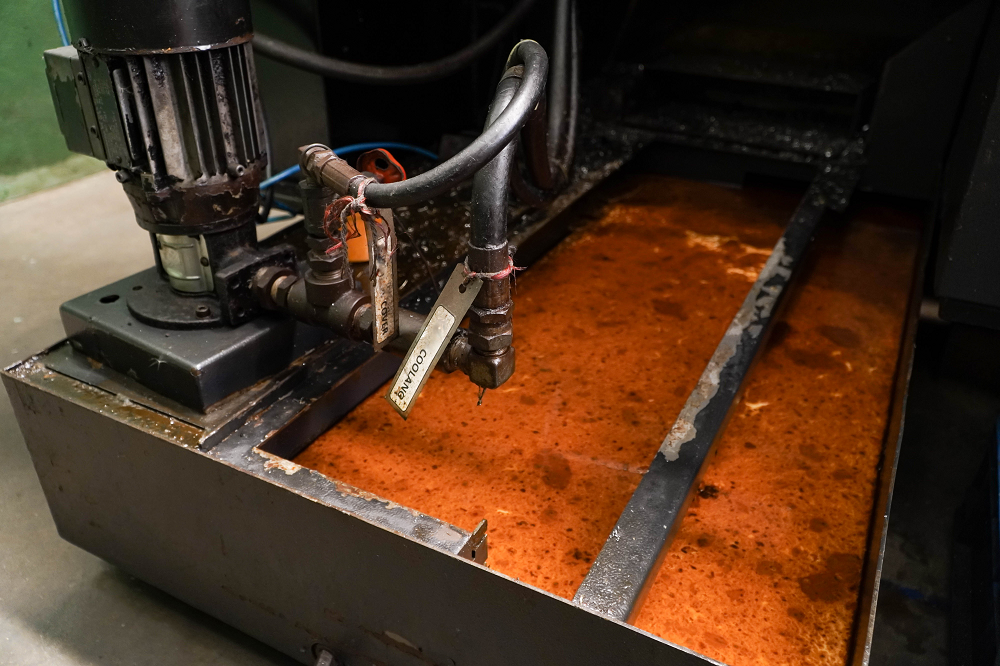Bacteria is everywhere, including in metalworking shops. It’s on every work surface, cutting tools, operators’ hands, and even in the metalworking fluid in the sump. Though it’s often the least of machine operators’ and floor managers’ worries, letting bacteria growth go unchecked can derail every type of business goal, including revenue targets, profit margins, spending, and retention rates. Fortunately, preventing bacteria issues can be as simple as maintaining a diligent and effective metalworking fluid maintenance program.
Read on to learn more about the impact bacteria can have on your operation and the best way to prevent overgrowth.
How Unchecked Bacteria Growth Can Derail Business Goals
In a machine shop, most bacteria issues (particularly odor) originate in the sump. A dirty machining environment creates the perfect condition for bacteria to thrive — especially when excessive tramp oil and contamination is collected in the fluid. As bacteria feeds on metalworking fluid and continues to multiply, it releases ammonia and other waste that degrades metalworking fluid, eventually resulting in product separation and sometimes even complete failure of the metalworking fluid. This can result in:
- Shorter fluid life, requiring more frequent concentration checks and top ups — as well as higher coolant consumption and spend.
- Shorter tool life, from high heat and friction caused by poor lubrication due to degraded metalworking fluid.
- Higher scrap rate from corrosion, staining, and overall poor surface finish quality.
- More frequent and longer machine downtime from tool replacements and sump cleanouts.
- High operator turnover from foul odors emanating from the sump.
Though relatively small issues on their own, these problems can quickly add up to high operating expenses, missed production deadlines, and declines in profit. And during a labor shortage, outgoing shop workers might spread the word about poor working conditions, encouraging a bad reputation and making hiring even more difficult.
Go Beyond Bacteria Control With Cutting Fluid Maintenance
Unchecked bacterial growth can create a lot of complex problems throughout your operations, but the solution is relatively simple. All operators and shop managers need to do is follow basic cutting fluid maintenance protocols. Here’s what to keep in mind:
- Maintain manufacturer-recommended concentration. Every metalworking fluid performs best with a certain concentration in the sump. Use a refractometer to check levels at least once per day and top up the sump as necessary.
- Check pH. When measuring concentration, also check the pH of the fluid to ensure it’s in the proper range. This can minimize the risk of bacterial growth, with the added benefit of maximizing fluid performance and preventing corrosion on machine tools and workpieces.
- Keep fluid clean and free of tramp oil and other debris. Tramp oil, sludge, and other contamination in the sump create conditions for bacteria to multiply and colonize. Use equipment like oil skimmers on an ongoing basis to collect tramp oil from the fluid before it emulsifies, and use sump suckers for efficient and complete machine sump cleaning.
- Conduct regular sump cleanouts. At least once per year, fully empty the fluid sump using an industrial sump cleaner like Master STAGES™ Whamex™ to clean the tank, pumps and lines, and remove any contamination. If the metalworking fluid has been properly maintained, then it may be in good enough condition to continue using, so store it in a drum or tote to recharge the sump after cleaning. Testing the concentration and pH can show if it is.
- Use high-quality cutting fluid. Master Fluid Solutions’ signature TRIM line of cutting fluids is specially formulated to naturally resist bacteria without additional biocides. Operators could potentially use the same charge for years if they properly maintain the fluid.
Following metalworking fluid maintenance protocols diligently won’t just keep bacteria in check — it will ensure optimal performance and long life of the fluid, improving every measure of performance. Need help upgrading your fluid or establishing a good maintenance program? Get in touch with the team at Master Fluid Solutions today.
